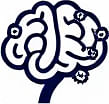Exploring Double-Loop Learning
 by Marlene Keeling
by Marlene Keeling
Double-loop learning goes beyond simple problem-solving by examining and changing underlying assumptions. This approach fosters deeper growth in personal and professional contexts, making it essential for adaptive thinking and cognitive development.

Double-loop learning offers a way to go deeper into how we think and adapt. This mental model helps individuals and organizations move past surface-level fixes to address root causes. For instance, in everyday situations, people often react to problems without questioning why they occur.
In the field of psychology, double-loop learning involves reflecting on core beliefs that shape behavior. This process allows for meaningful change, unlike single-loop learning, which focuses only on immediate adjustments. A classic example is someone who diets repeatedly but fails to lose weight; they might tweak their routine without examining deeper habits or motivations.
Professionals in business find this model useful for innovation. By applying single-loop learning, teams might solve a project delay by working overtime. However, true progress comes from double-loop learning, where they question organizational processes that led to the delay in the first place.
To illustrate, consider a company facing declining sales. Single-loop efforts could involve increasing advertising, but double-loop learning prompts an examination of product strategies or market assumptions. This shift can lead to transformative outcomes, such as pivoting to new markets or redesigning offerings.
In cognitive development, this mental model supports lifelong growth. Children learn through trial and error, but adults can use it to refine thinking patterns. For example, a student struggling with exams might study harder initially, but through double-loop learning, they explore study methods or personal attitudes toward learning.
Key Steps to Apply Double-Loop Learning
One effective way to practice this is through structured reflection. First, identify a recurring issue in your life or work. Then, ask probing questions about the assumptions behind it. For instance:
- What beliefs are influencing this problem?
- How did these beliefs form?
- What alternatives exist?
Using lists can help organize thoughts:
- Step 1: Document the problem and initial responses.
- Step 2: Analyze underlying factors, such as cultural or personal influences.
- Step 3: Experiment with new approaches based on insights.
- Step 4: Review outcomes and adjust as needed.
In psychology, research shows that this method enhances adaptability. Studies on decision-making reveal that individuals who engage in double-loop processes perform better in dynamic environments. This ties into broader cognitive strategies that promote resilience and creativity.
For business strategies, leaders use double-loop learning to foster a culture of inquiry. Rather than sticking to traditional methods, they encourage teams to challenge norms. This can result in more innovative solutions, such as rethinking team structures or resource allocation.
Benefits in Daily Life
On a personal level, adopting this mental model can improve relationships. People often argue over minor issues without addressing deeper communication patterns. By applying double-loop learning, they can uncover and modify these patterns, leading to stronger connections.
In education, teachers apply it to enhance student engagement. Instead of repeating the same lessons, they question curriculum assumptions and adapt teaching styles to better meet diverse needs.
Challenges may arise when implementing this approach. It requires time and openness to change, which not everyone finds easy. Yet, the long-term gains in cognitive development make it worthwhile. For example, professionals who regularly practice it report higher job satisfaction and better problem-solving skills.
To summarize, double-loop learning serves as a vital tool for growth. It encourages examining and altering foundational elements, leading to sustained improvement. Whether in psychology, business, or personal endeavors, this model provides a pathway to deeper insight and effectiveness.
